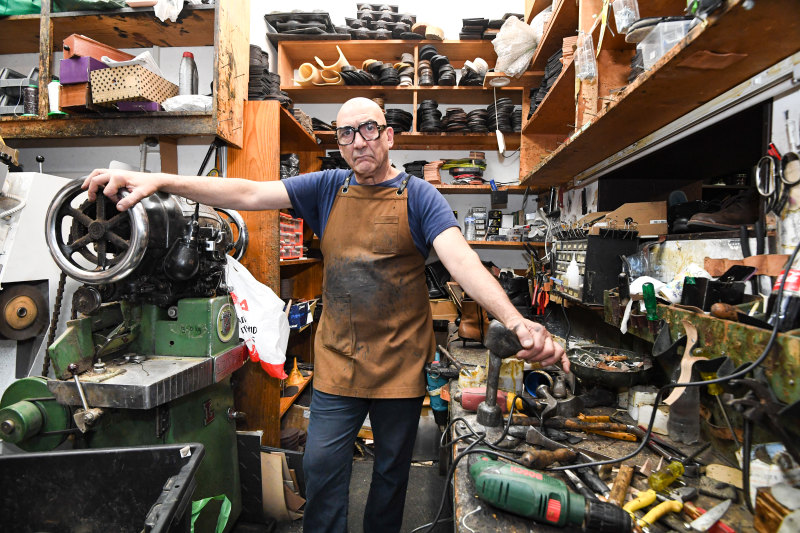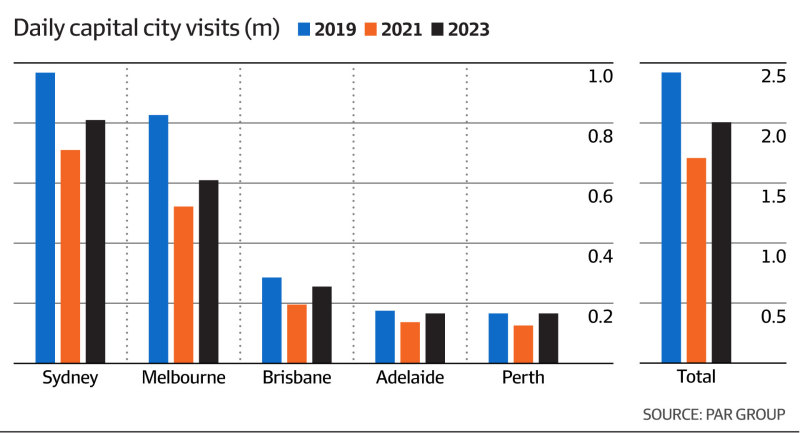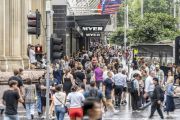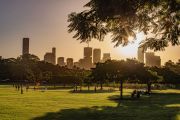
Cobbler counts the cost of fewer feet as CBD economies lose $4.3b
Almost three years since the end of lockdowns, Sydney cobbler Robert Attallah is rubbing his forehead with worry more often these days. Foot traffic has still not returned to pre-pandemic levels at his CBD shop.
Mr Attallah, who runs Sydney CBD mainstay Coombs Shoe Service, said retailers faced tougher business conditions as office workers were mostly only in the city between Tuesday and Thursday.

“All retailers in the city are suffering because people are only working three days maximum in the city,” said Mr Attallah, whose family has been running the cobbler business for 68 years.
“Retail shops in the city rely on bums on seats, so if people are at home then all businesses are suffering. It’s a new world and you just have to adjust and change accordingly.
“It’s also hard as the thing is shop owners like me are paying lots of rent for only two and three-day occupancy, which is wrong.”
The 57-year-old cobbler is among thousands of CBD retailers nationally that have been feeling the pain of fewer workers in cities, as new data indicates the phenomenon has led to the national CBD economy shrinking by $4.36 billion annually.
The total loss in revenue includes retailers down by $2.29 billion a year in reduced spend from fewer city visitations, while the CBD accommodation sector was losing about $2.07 billion dollars annually for the same reason.
The data, from commercial property research agency PAR Group, also showed CBDs daily visitations were down more than 15 per cent from pre-pandemic levels despite a pickup in population numbers. The decline in visitations equated to about 418,513 fewer people visiting CBDs every day, which meant the latest figures were much closer to 2021 lockdown levels rather than 2019 pre-pandemic levels.

As CBDs become less busy, retailers and offices suffer. It’s becoming harder for some shops to stay afloat while the values of some assets – particularly in the office sector – have tumbled.
PAR Group’s Damien Stone, who conducted the analysis, said the biggest reason for quieter CBDs was the decline in city visitations by office workers – which contributed almost 90 per cent – 372,158 – of the visitation dip.
“The behaviour of office workers is the largest driver of the change in city visitations. Around the world, the return to office has stalled,” Mr Stone said.
“Whilst there are efforts by employers to increase working in the office, there are few indications the daily office workforce will approach 2019 levels any time soon.”
The slump in CBD visits comes despite the number of people aged over 15-years-old rising by almost 1.39 million from December 2019 to December 2023. The population increase has nevertheless led to the smaller CBDs – Perth and Brisbane – achieving visitation levels closer to pre-pandemic levels relative to Sydney and Melbourne.
In Sydney and Melbourne, the inner-city resident population has not grown as a result of a slowing pipeline in apartment development and a pushback against increased housing density.
MSCI regional research head Benjamin Martin-Henry said the Sydney and Melbourne CBD markets have been hit harder from office workers working from home – another reason why those cities’ CBDs have struggled more heavily to bounce back.
“It is a concern that Sydney and Melbourne aren’t getting a similar number of visitations as pre-COVID because it has been a few years since lockdowns, but the market has admittedly been slow to recover,” he said.
“There are some people out there that fear that, particularly with secondary offices for example, if a building becomes unviable and untenable where they end up turning the lights off, you could end up with these pockets that are no-go zones.”
Get a weekly roundup of the latest news from Commercial Real Estate, delivered straight to your inbox!







